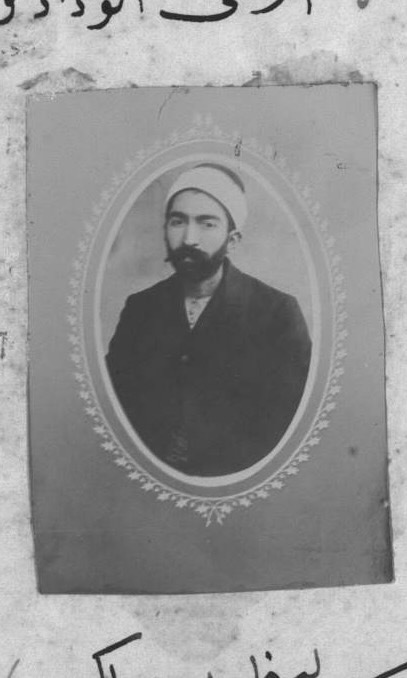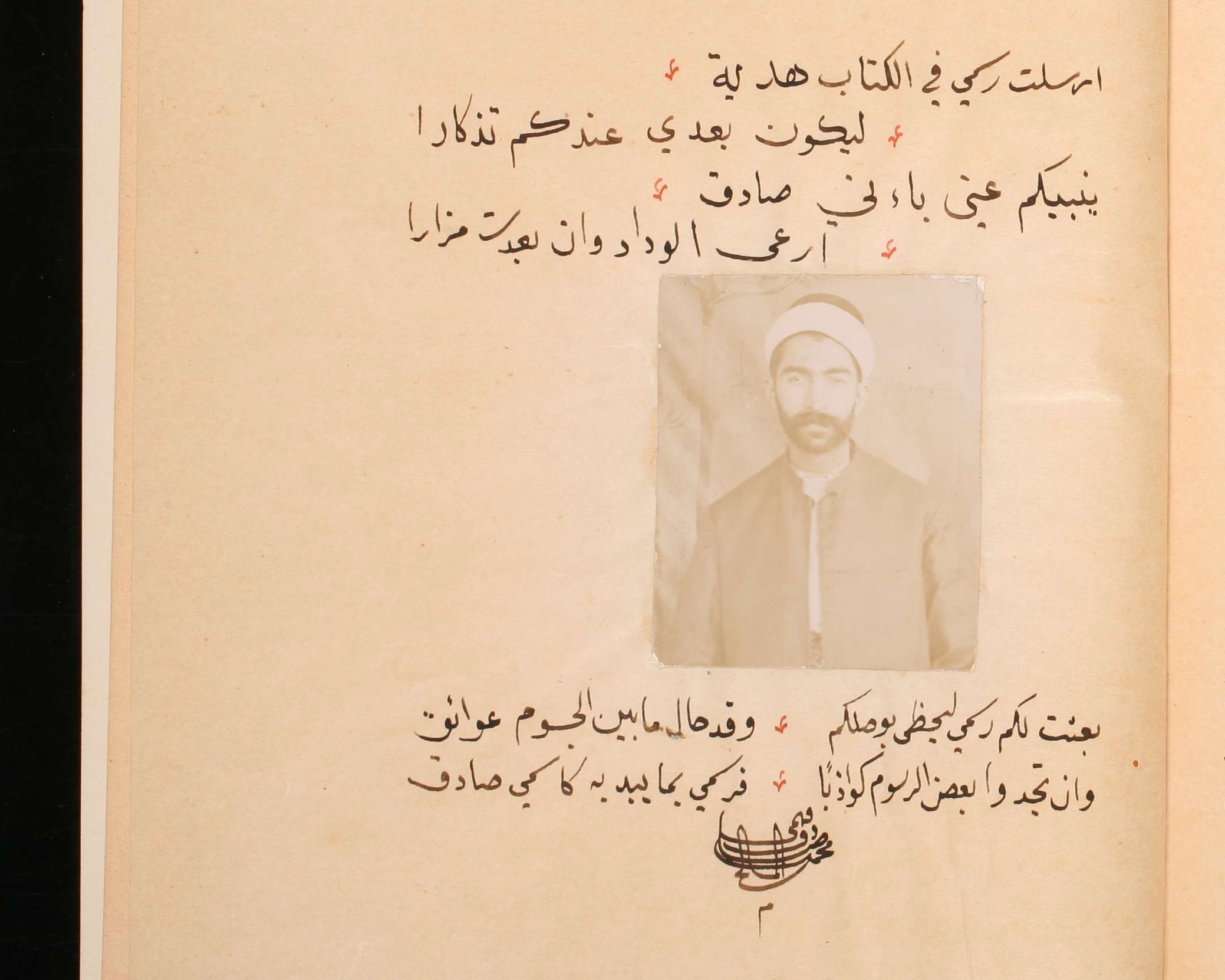Muḥammad Ṣādiq: A Scribe Between Manuscript And Print Cultures At The Beginning Of The 20th Century
Muḥammad Ṣādiq: A Scribe Between Manuscript and Print Cultures at the Beginning of the 20th Century
This story is part of an ongoing series of editorials in which HMML curators and catalogers examine how specific themes appear across HMML’s digital collections. From the Islamic collection, Dr. Celeste Gianni shares this story about Scribes.
A great opportunity to look at the interaction between manuscript and print cultures can be found in the Middle East, with the relatively late, large-scale introduction of the printing press starting in the early 19th century. Rather than a period of transition from one culture to another, this period could be defined as a period of transformation and coexistence for both handwritten and print cultures.
The production of Arabic manuscripts in the Middle East did not stop with the introduction of the press. There are thousands of Arabic manuscripts dated to the 20th–21st centuries in HMML Reading Room alone, attesting to the continuity of manuscript culture in Arabic-speaking regions. Looking at these manuscripts could shed light on the interaction between manuscript and print cultures and help us understand the cultural transformation that occurred in these regions.
Such a chance is provided by 10 manuscripts in the Université Saint-Joseph collection in Beirut, Lebanon. These manuscripts were copied between 1911 and 1921 CE by a scribe named Muḥammad Ṣādiq Fahmī ibn Amīn al-Māliḥ.

Muḥammad Ṣādiq was a professional copyist at al-Maktabah al-Ẓāhirīyah (the Ẓāhirīyah Library) in Damascus, Syria, active at the beginning of the 20th century. He worked there daily, copying manuscripts on different topics, focusing on the manuscripts that were damaged or at risk. He donated some of his manuscripts to the library. He also worked on commission, copying, for example, manuscripts for the Egyptian bibliophile Aḥmad Taymūr Pasha, enriching Taymūr’s personal library.
Several of Muḥammad Ṣādiq’s manuscripts are still held by al-Ẓāhirīyah, now part of the Syrian National Library in Damascus. Some of his manuscripts ended up in other collections in the Middle East, as is the case for at least 10 manuscripts (eight copied in 1911 and two copied in 1921) in the Université Saint-Joseph collection. A large collection photographed by HMML, the Université Saint-Joseph manuscripts are still being cataloged, so there is a good chance that more manuscripts copied by Muḥammad Ṣādiq will be identified.
Eight manuscripts copied in 1911 (USJ 2 00692, USJ 2 00693, USJ 2 00691, USJ 2 00437, USJ 00284, USJ 2 00694, USJ 00392, and USJ 00335) include a curious colophon—a statement at the end of a text given by the scribe, typically including information such as the name of the scribe and the date and place the manuscript was copied. The unusual structure of the colophon in these manuscripts presents some features that are evidence for the interaction between manuscript and print cultures at the beginning of the 20th century.

From these colophons, we learn that the manuscripts were all copied between October 13 and December 10, 1911, at al-Maktabah al-Ẓāhirīyah in Damascus, Syria, by Muḥammad Ṣādiq. In addition to these common details, the scribe includes a rare—if not unique—item: a photograph of himself, with a poem beneath explaining that he put the photo in as a gift, to give the reader something to remember him by. The inscription also includes his personal signature. Even more interestingly, he adds a few lines asking whoever might print the texts of these manuscripts to please mention his name in the printed edition and send him a copy.

Muḥammad Ṣādiq’s poem slightly changes from one manuscript to the other. Here, in its longest version (USJ 2 00694), the scribe plays with the meaning of his name Ṣādiq (i.e., honest). It reads:
I send my portrait in the book as a gift,
So that, after my death, it will be a memory,
telling you that I am honest [Ṣādiq],
keeping friendship even from afar
I send you my portrait to keep in touch with you,
Even when bodies have been separated by obstacles,
And if some portraits are false
My portrait is just like my name: honest [Ṣādiq]

The selection of the texts copied by Muḥammad Ṣādiq is also interesting. They are rather rare texts from the Arabic written heritage that cover a variety of topics, from medicine to poetry, archery to grammar, etc. For example, he copied Ibn al-Khiyamī’s treatise on the Arabic words for dogs (USJ 2 00242); a collection of medical texts (USJ 00335), including al-Ilbīrī’s philosophical treatise on medicine (al-Natāʼij al-ʻaqlīyah, a translation of Galen’s De alimentorum facultatibus) and a selection of passages from Ibn al-Jazzār’s treatise on the characteristics of drugs and potions; the Kitāb Shānāq fī al-sumūm wa-al-tiryāq (Book of poisons and antidotes), which is a 4th-century Sanskrit text translated first in Persian, then Arabic in the 8th century (see USJ 00284); and other rare texts.
One question that arises from the colophon of these manuscripts and the scribe’s careful selection of texts is this: why did Muḥammad Ṣādiq choose to copy these texts in manuscript form, when the printing press was an available option to reproduce and spread their content on a larger scale?

Muḥammad Ṣādiq certainly believed that his work was still relevant. The selection of rare works and the fact that he was copying under the commission of a bibliophile such as Aḥmad Taymūr Pasha suggests that his job as a scribe was not only to copy damaged manuscripts in order to preserve them, but also to choose texts in order to bring them to the attention of those who could decide whether to print them for a larger audience. Thus, the job of the scribe became, in this way, a sort of intermediary job in the process of publishing certain texts, selected from the rare heritage still well-kept and transmitted by the Arabic manuscript tradition.
This is just one of many examples among manuscripts copied in the 20th–21st centuries that shed light on the dynamic interaction between manuscript and print cultures in the Arabic-speaking world. HMML Reading Room holds digitized copies of several such manuscripts, waiting to be researched under these and other lenses.
Further Reading:
Yūsuf al-Sinnārī, “Warrāq al-Maktabah al-Ẓāhirīyah: Muḥammad Ṣādiq Fahmī al-Māliḥ,” in Āfāq al-thaqāfah wa-l-Turāth, June 2020, issue 110, pages 122–131.
Torsten Wollina, “The Library of Ahmad Taymur,” in Damascus Anecdotes, July 14, 2019.




